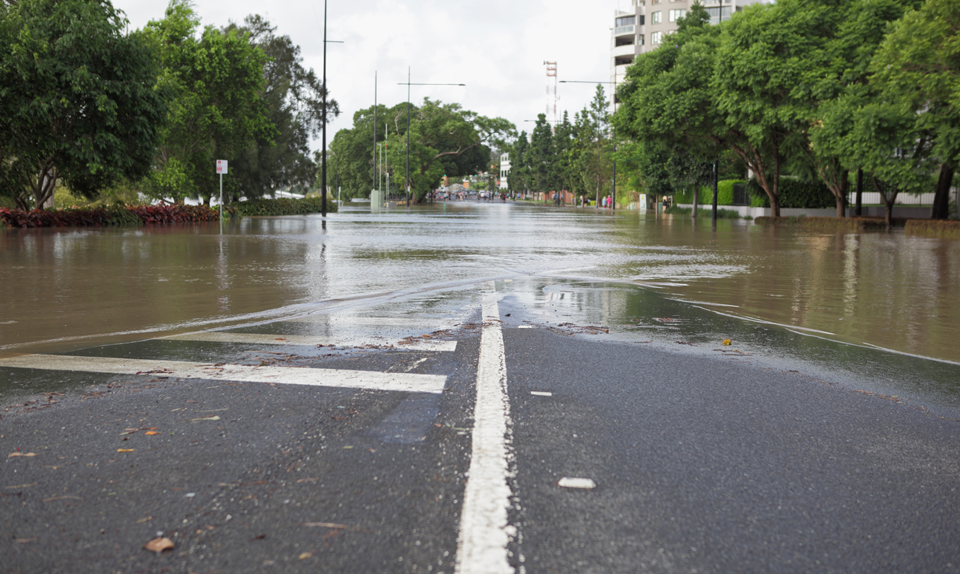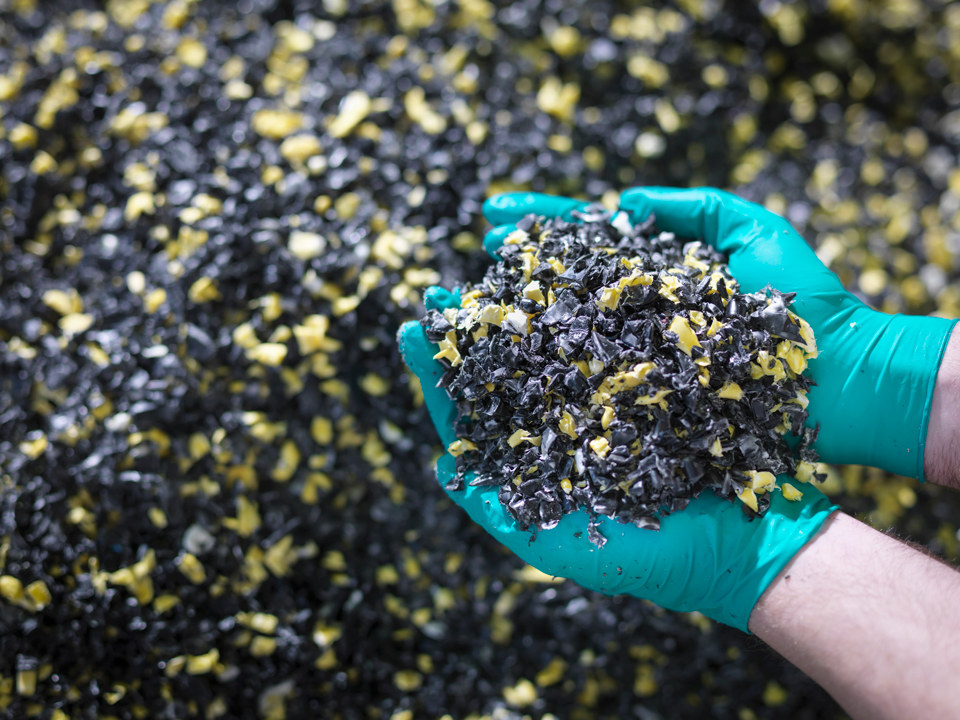Our work on environment and sustainability falls under seven key themes:
- General Environment and Sustainability
- Greenhouse Gas Emissions
- Climate Change Resilience
- Circular Economy
- Biodiversity
- Human Health
- Heritage

General Environment and Sustainability
Overarching activities that embed sustainability within an organisation such as sustainability policies and guidelines and strategies to monitor and report on their transitioning towards sustainable transport.
This table summarises environmental and sustainability initiatives in place by Austroads member agencies across Australia and New Zealand in 2024 that address greenhouse gas emissions and other key environmental issues.
Part 11 of the Austroads Guide to Asset Management addresses sustainable asset maintenance techniques used in Australia and New Zealand.
Greenhouse Gas Emissions (GHG)
Activities that reduce transport related GHG and initiatives including net zero transport, zero emission targets and transport mode shifts.
Part 4E of the Austroads Guide to Pavement Technology presents the latest information about products manufactured from recycling various waste materials accepted through registered recycling and reprocessing facilities. It includes an assessment tool to provide administrative agencies with a framework to rigorously scrutinise emerging materials for potential impacts to economic, environmental, societal and performance outcomes.
This Issues Paper analyses the contribution of transport and the road sector to greenhouse gas emissions in Australia and New Zealand and reviews opportunities for contributing to net zero emissions in the context of electric vehicle take-up.
Sprayed seals are a widely used, critical component of the road system in Australia and New Zealand, serving as the predominant type of sealed road surfacing in both countries. This report explores sprayed seal technologies and practices to improve their sustainability and reduce their environmental impact.
This project seeks to facilitate a widespread use of concrete with lower cement content.
This project seeks to understand the impacts and responses needed to support next generation sustainable heavy vehicles.
Climate Change Resilience
Activities that manage climate-related risks to transport assets and operations and initiatives including improving infrastructure resilience, assessing and managing both physical and transition climate-related risks.
Part 5 of the Austroads Guide to Road Design provides road designers and other practitioners with guidance on the design of drainage systems, including community, environmental and social considerations that need to be considered or addressed in the design and delivery of a project.
Part 4E of the Austroads Guide to Pavement Technology presents the latest information about products manufactured from recycling various waste materials accepted through registered recycling and reprocessing facilities. It includes an assessment tool to provide administrative agencies with a framework to rigorously scrutinise emerging materials for potential impacts to economic, environmental, societal and performance outcomes.
This map provides a visual representation of the Weighted Mean Annual Pavement Temperature across Australia and New Zealand, based on data collected as part of the update to the Austroads Guide to Pavement Technology Part 2: Pavement Structural Design, which was published in April 2024.
This report presents the work undertaken to update the Lifeline Risk Indicator Tool, first published in 2016. This tool has two purposes. First is to identify lifeline freight routes and allow road managers to establish a lifeline route network. Second is to rank investments in lifeline routes in terms of economic and social impacts.
The guidelines set out a framework for Australian and New Zealand transport agencies to consider when undertaking climate change and natural hazard risk assessments and developing adaptation plans. Examples are provided throughout. The guidelines are intended to be flexible, covering the application of both high-level and detailed risk assessments of physical and transition risks.
This report provides practical guidance and user cases for asset managers within the transport sector to embed consideration of climate resilience into asset management.
This report compares local (Australia and New Zealand) and selected international (Europe and North America) approaches to pavement design, heavy vehicle mass limits and supporting decarbonisation of the heavy vehicle fleet.
This project seeks to provide system level guidance to support road managers to safely and efficiently prepare, respond and operate road networks during flooding and wet weather events using a risk-based management framework.
This project seeks to provide guidance for bridge owners on managing the risk of bridge flooding, scour and resilience due to floods. The project will develop a new Austroads guideline for flood response and recovery for bridges including topics on scour identification, impact and risk calculation and flood response operational requirements.
This project seeks to inform and summarise best practice in degraded operations planning, operational responses and other considerations arising from the loss of ITS devices controlling the traffic network.
This project will obtain long-term projections of future Weighted Mean Annual Pavement Temperature (WMAPT) forecasts for Australia and New Zealand and incorporate these into the Austroads Guide to Pavement Technology Part 2: Pavement Structural Design to assess their impact on pavements.
This project will research the need for and nature of guidance for climate change resilience of transport assets, network management and operations, and plan for its development and approach to delivery.
Circular Economy
Activities that reduce or minimise waste and initiatives including using sustainable material and incentivising circular economy innovations.
Publications and projects in this category are further categorised into:
Recycled Materials
Part 4E of the Austroads Guide to Pavement Technology presents the latest information about products manufactured from recycling various waste materials accepted through registered recycling and reprocessing facilities. It includes an assessment tool to provide administrative agencies with a framework to rigorously scrutinise emerging materials for potential impacts to economic, environmental, societal and performance outcomes.
Crumb Rubber
Due to the lack of crumb rubber binder grades in the Australian national polymer modified binder (PMB) specification (ATS 3110), two Austroads jurisdictions have conducted research to develop specifications for crumb rubber binders that are suitable for use in asphalt.
This report describes research into the development of a draft Austroads evaluation protocol for rejuvenators.
This report provides a comprehensive overview of the fate of end-of-life tyres, the tyre recycling industry in Australia and New Zealand, the specifications for the use of crumb rubber in road applications and the potential benefits of other-than-truck tyres crumb rubber to be utilised in asphalt roads.
Recycled Glass
This guideline provides readers with a point of reference to review process considerations, technical notes and the current market practices for producing recycled crushed glass products for use as a sand replacement in road construction.
Reclaimed Asphalt
Part 4E of the Austroads Guide to Pavement Technology presents the latest information about products manufactured from recycling various waste materials accepted through registered recycling and reprocessing facilities. This includes the specification, manufacture and application of products derived from the recovery of construction and demolition waste (C&D waste) from the building industry; reclaimed asphalt pavement (RAP) from pavement maintenance and rehabilitation activities; recycled rubber from end-of-life tyres (crumb rubber); industrial slag from manufacturing processes; fly ash from power generation; recycled plastics; and recycled glass.
This report describes research into the development of a draft Austroads evaluation protocol for rejuvenators. Rejuvenators are typically used to produce asphalt mixes containing high levels of reclaimed asphalt pavement (RAP).
This study provides guidance on the design and specification of RAP mixes with a goal to reduce uncertainty surrounding the performance of asphalt mixes designed and manufactured with RAP.
The test method sets out the procedure for the determination of viscosity of binders recovered from RAP source materials, as well as of virgin binders and rejuvenators.
This Austroads Technical Specification sets out the requirements for the supply of reclaimed asphalt pavement (RAP) material used in the manufacture of asphalt.
This project seeks to facilitate the efficient management of reclaimed asphalt pavement (RAP) in asphalt by validating the recently developed binder rejuvenator assessment protocol from completed Austroads Project APT6247 'Increasing asphalt recycling with binder rejuvenators'.
Foamed Bitumen
This report documents a project to develop a new laboratory fatigue relationship to predict the performance of foamed bitumen stabilised (FBS) materials.
This report presents the findings of a project that evaluates the fatigue performance of foamed bitumen stabilised (FBS) pavements under accelerated loading.
Plastics
This is the first report from Austroads project APT6305, which is examining the use of road-grade recycled plastics in asphalt pavements. The report examines the use of road-grade recycled plastics in asphalt pavements and investigated the most suitable types of recycled plastics for incorporation into asphalt.
This is the second report from Austroads project APT6305. It provides a comprehensive overview of the initial development of various testing frameworks for the characterisation of road-grade recycled plastic, the incorporation of recycled plastics in bitumen and asphalt via various methods, and the study of possible emissions and microplastics release.
This is the third report from Austroads project APT6305. It details the full results obtained from the testing frameworks developed in the second report, including the physical, rheological and mechanical performance of recycled plastic-modified bitumen and asphalt, emissions and the release of microplastics.
This report builds on the findings from Part A of the third report from Austroads project APT6305. It investigates the mixed method of inclusion of recycled plastic into asphalt, including the physical, rheological and mechanical properties of plastic modified asphalt, emissions and microplastic release, and future recyclability of asphalt containing recycled plastic.
Biodiversity
Activities that reduce the negative impacts on flora and fauna and initiatives including fauna and flora protection design, ecological connectivity and land disruption minimisation.
Part 6B of the Austroads Guide to Road Design contains information on the components of roadside areas that may need to be accommodated within a road reserve. These components include environmental aspects such as fauna management and noise control, landscaping, road furniture including signs, poles, fencing and lighting.
Human Health
Activities that reduce the negative impacts on human health and address cultural connections and initiatives including encouraging active transport.
Publications and projects in this category are further categorised into:
Noise
Part 6B of the Austroads Guide to Road Design contains information on the components of roadside areas that may need to be accommodated within a road reserve. These components include environmental aspects such as fauna management and noise control, landscaping, road furniture including signs, poles, fencing and lighting.
Active Transport
This report provides coverage of interventions effective in growing active transport mode share.
Part 6A of the Austroads Guide to Road Design provides guidance for designers and other practitioners on the design of paths for safe and efficient walking and cycling, both within the road corridor and outside the road corridor.
This report recommends improvements to the current cycling and micromobility planning guidance in Austroads Guide to Traffic Management (AGTM).
This project seeks to deliver best practice guidance on the planning processes for pedestrian infrastructure, incorporating movement and place principles.
This project seeks to deliver best practice guidance on the planning processes for cycling infrastructure, incorporating movement and place principles.
This project seeks to support agencies in developing and implementing movement and place frameworks by building a common movement and place language, and delivering best practice guidance for agencies to develop and implement movement and place frameworks.
This project seeks to inform better travel planning for schools and pre-schools.
Heritage
Initiatives that address and reflect the rich history, cultural diversity and ancestral connections within landscapes.
Part 7 of the Austroads Guide to Bridge Technology discusses the structural management of existing bridges in practical technical terms. It documents practices relevant to forward works programming, inspection, recording, reporting, evaluation of bridge condition and fitness for purpose.






